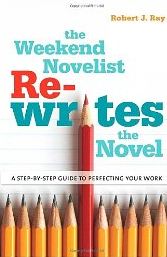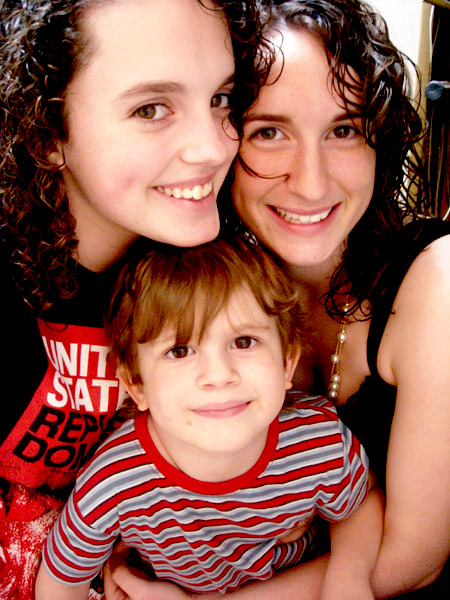 I recently encountered a technique for fleshing out a scene that has blown my mind with its insightful attention to detail.
I recently encountered a technique for fleshing out a scene that has blown my mind with its insightful attention to detail.
Whether writing the scene for the first time or rewriting it because it needs more substance or just plain rewriting the scene because something isn’t working, this technique can be used for any of these purposes.
I have a tendency to sink heavily into one or two of the six elements and when later I re-read what I’ve written, I’m left with the feeling that the scene rushed so fast through the narrative that I lost my sense of place and no longer felt the setting. Other times the dialogue (however witty) is isolated in itself to the point that I don’t have a good sense of where my characters are standing, how their faces look, or even what their physical movements have been during their conversation.
This six element technique balances the scene and fills in the details that each scene in a story desperately needs. This exercise can be done in thirty-one minutes. I usually write it out with pen and paper since my thoughts flow smoothest this way and I can’t get distracted with typos on a computer screen. I then type it up, so it takes my about an hour, total.
The technique, used here with permission, is taught in Robert J. Ray’s book: The Weekend Novelist Re-Writes the Novel. The overview is found here:
31-minute Template:
Writing time: Take one minute for the warmup and then five minutes each for the six sections:
One minute warmup: This scene needs rewriting because…
Setting: The time was… the room/street/alley/cell smelled of…
Character: His/her hairdo looked like…
Dialogue: What are you looking at?
Action: She reached out and…
Intruder: A shadow makes her look up…
High Point: …and then s/he swung the…
BEGIN: One Minute Warm-Up-First of all, you need to set your mission. Take just a second to write something like–I am writing about the first time Cleo and Calvin enter the manor. Or maybe it looks like I am rewriting the first time Cleo and Calvin enter the manor because it needs more suspense and foreshadowing. State what you’re about to do.
 1. Setting-Take a moment to look around the room, restaurant, park, alley, and describe where your character(s) are. Public place? Isolated? What time of day is it? What is the weather up to? How is everyone dressed? Are there any smells or sounds that will add to the picture? The musty smell of rotting wood filled the library, making the visitors search unconsciously for a leak in the roof. The rain had pounded against the windows and walls all morning, and it was starting to give Lawrence a headache. In this example, the setting has already set a mood for our character, before he’s said a word.
1. Setting-Take a moment to look around the room, restaurant, park, alley, and describe where your character(s) are. Public place? Isolated? What time of day is it? What is the weather up to? How is everyone dressed? Are there any smells or sounds that will add to the picture? The musty smell of rotting wood filled the library, making the visitors search unconsciously for a leak in the roof. The rain had pounded against the windows and walls all morning, and it was starting to give Lawrence a headache. In this example, the setting has already set a mood for our character, before he’s said a word.
Writing time: 5 minutes.
 2. Character-Here is where you get to drop some insight into the character. Is she having a flashback because something reminds her of her mother? Is she dressed in a way that reveals insecurity about her fashion sense? When she speaks to her husband, does it conjure a reaction from him that’s entrenched in memories from their childhood? This is where you get to go deep and reveal some part of your characters as living, breathing people within your story.
2. Character-Here is where you get to drop some insight into the character. Is she having a flashback because something reminds her of her mother? Is she dressed in a way that reveals insecurity about her fashion sense? When she speaks to her husband, does it conjure a reaction from him that’s entrenched in memories from their childhood? This is where you get to go deep and reveal some part of your characters as living, breathing people within your story.
Writing time:: 5 minutes.
 3. Dialogue-What words do you need spoken in this scene to carry off its purpose? Since you’ve already stated your purpose in your one minute warm-up, this should help to focus your dialogue. I have a habit of meandering in a lot of dialogue that becomes extraneous after I discover what it is I need to say. Is your main dialogue an argument? Pressure from one character to make the other reveal information? Flirtation? Veiled threats? Sketch it out, using your springboard of setting and character that you’ve already written.
3. Dialogue-What words do you need spoken in this scene to carry off its purpose? Since you’ve already stated your purpose in your one minute warm-up, this should help to focus your dialogue. I have a habit of meandering in a lot of dialogue that becomes extraneous after I discover what it is I need to say. Is your main dialogue an argument? Pressure from one character to make the other reveal information? Flirtation? Veiled threats? Sketch it out, using your springboard of setting and character that you’ve already written.
Writing time: 5 minutes
 4. Action-This is the structure of what happens in your scene. Write this as a narrative. He flung open the door and ran inside, peering at the paintings as if trying to decide which one hid the secret door. She watched him, her hands reaching discretely for the telephone. This is a good way for you to decide the events you will cause to transpire throughout at the scene.
4. Action-This is the structure of what happens in your scene. Write this as a narrative. He flung open the door and ran inside, peering at the paintings as if trying to decide which one hid the secret door. She watched him, her hands reaching discretely for the telephone. This is a good way for you to decide the events you will cause to transpire throughout at the scene.
Note: the farther I get into these six elements, the more I tend to coalesce them as the scene takes on a life of its own. This mixing of elements seems fine to me, since the whole point is to round out the scene, not to get stuck by filling out these boxes and sticking to the letter of the law.
Writing time: 5 minutes
 5. Intruder-What force, person, bit of news is going to break into your scene and insert something new and exciting, emotional, forboding, revealing, horrifying, mysterious, threatening…you get the idea. This can be the radio suddenly announcing a fatal accident on the highway and your hero suddenly needs to know that his girlfriend is safe. This could be a strange song that interrupts two characters arguing and they wonder how a woman could be singing from the attic if it was sealed off two years ago. This could be someone bursting in on dinner and announcing that they’ve been awarded a trophy at work. It needn’t always be a soap-operatic gasp “You’re pregnant!” moment, but it need be some kind of interruption. Something as simple as the shadow of a cloud passing over someone’s face and distracting him from his work is enough, especially if we can use it to plunge deeper into the personal and emotional lives of our characters.
5. Intruder-What force, person, bit of news is going to break into your scene and insert something new and exciting, emotional, forboding, revealing, horrifying, mysterious, threatening…you get the idea. This can be the radio suddenly announcing a fatal accident on the highway and your hero suddenly needs to know that his girlfriend is safe. This could be a strange song that interrupts two characters arguing and they wonder how a woman could be singing from the attic if it was sealed off two years ago. This could be someone bursting in on dinner and announcing that they’ve been awarded a trophy at work. It needn’t always be a soap-operatic gasp “You’re pregnant!” moment, but it need be some kind of interruption. Something as simple as the shadow of a cloud passing over someone’s face and distracting him from his work is enough, especially if we can use it to plunge deeper into the personal and emotional lives of our characters.
I am excited to say that this element has been transformational for my scenes. I have had many scenes that seemed to “fizzle” or lose steam and I didn’t know what to do. I felt compelled to close them in some way, which often wasn’t particularly exciting, but I didn’t know what else to do. Now the scenes can more easily slip from one to another with the use of the intruder element. Enjoy this one. 🙂
Writing time: 5 minutes
 6. High-Point-This is where the action crescendos. If it’s a fight scene, it’s the moment when the deciding strike is made. If it’s an argument, it’s the moment when the new or final information is revealed and the two participants must decide how to react to it (or perhaps one must retreat). This is probably the most difficult element for me to write, at the moment. I do know that once you have your high point established, you can send your scene rushing towards its crest and then slide away from it with more care than if you don’t know your scene’s high-point. For me, it’s often as I’m planning my scene’s intruder that I discover what my high point might be, in retrospect.
6. High-Point-This is where the action crescendos. If it’s a fight scene, it’s the moment when the deciding strike is made. If it’s an argument, it’s the moment when the new or final information is revealed and the two participants must decide how to react to it (or perhaps one must retreat). This is probably the most difficult element for me to write, at the moment. I do know that once you have your high point established, you can send your scene rushing towards its crest and then slide away from it with more care than if you don’t know your scene’s high-point. For me, it’s often as I’m planning my scene’s intruder that I discover what my high point might be, in retrospect.
Writing time: 5 minutes
Rearranging. Obviously, a scene is not going to read well in six little chronological chunks without any rearranging. Dialogue, for example, is often interspersed with action, character, and setting. Once everything is written, you can type it, then arrange it so that the scene flows more smoothly. The thing you will have accomplished is that the scene now has healthy proportions of each element.
I will share an example of writing these six elements for your learning edification in a subsequent post. I also want to hear from those of you who try the exercise. Let me know your experience. What element was challenging for you? What element was easiest?
Pingback: Six Elements of a Scene in Action « Turning Leaf
Pingback: Timed Writing and Why You Need It « Turning Leaf